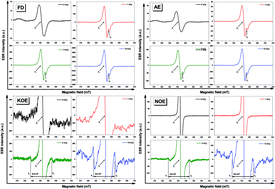Effects of sample pretreatments on EPR spectral characteristics of irradiated sea algae – an advanced approach to identify irradiation status
Abstract
Different sea algae, such as sea tangle, seaweed and sea mustard, were gamma-irradiated at 1, 5 and 10 kGy. The influence of different sample pretreatments namely, freeze drying (FD), alcoholic extraction (AE), NaOH extraction (NOE) and KOH extraction (KOE) on the paramagnetic characteristics of the sea algae after irradiation was studied using electron paramagnetic resonance (EPR) spectroscopy. The EPR spectra of the non-irradiated samples were characterized by a single central line (g = 2.006). In the case of irradiated sea tangles, two types of paramagnetic species were identified. Sugar-like radicals were observed in the samples subjected to FD and AE. A triplet signal of the cellulose radical was identified after NOE and KOE. In case of seaweed a new radiation-induced paramagnetic centre with a hyperfine coupling (hfc) of 2.3 mT was detected after NOE and KOE. However, AE was found to be an appropriate approach to detect the radiation-induced cellulose signal for irradiated sea mustard. Thus, the importance of different sample pretreatments for EPR spectroscopy to identify and characterize detection markers in irradiated sea vegetables was demonstrated.


 Please wait while we load your content...
Please wait while we load your content...